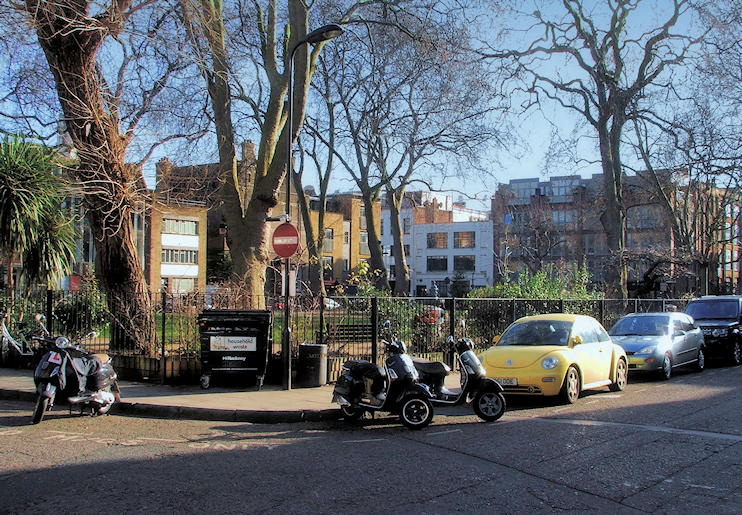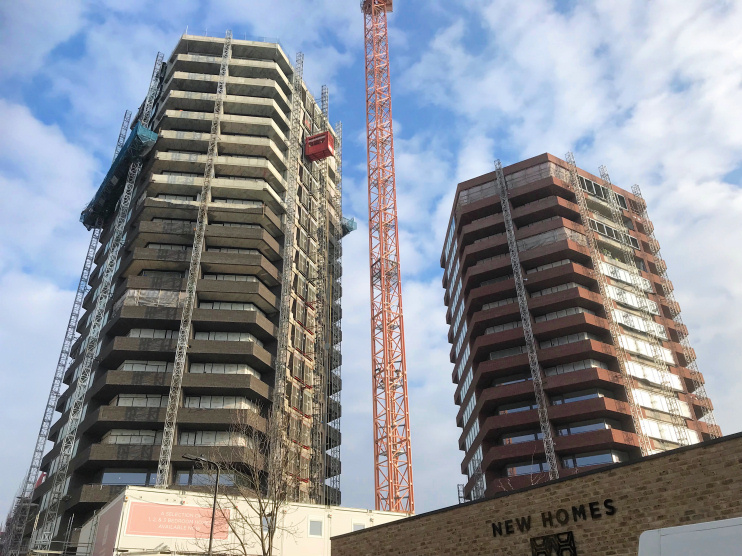Hoxton
Hoxton, Hackney
Until recently a solidly working-class neighbourhood, this north-western corner of Shoreditch is now popular with members of London’s creative industries

It is possible that hogs were once kept here (hence Hogsden, a widely used alternative spelling in the past) but more likely that the place name derives from a farm belonging to a man called Hōc. St Paul’s Cathedral owned the manor at the time of Domesday Book.
There were attempts in the 1680s to make Hoxton a sort of ‘North End’ to rival the West End, but the creation of Hoxton Square (shown in the photograph above*) and Charles Square failed to spark an inrush of wealthy homebuyers. Instead, Hoxton’s open spaces retained their market gardens and gained hospitals, schools and public houses.
In 1685 the wealthy Cornish merchant Sir Robert Geffrye donated land for almshouses on Kingsland Road where Hoxton meets Haggerston. These were completed in 1715 and are now home to the Geffrye Museum.
A number of religious dissenters came to live in Hoxton, most memorably the Ancient Deists, who believed they conversed with the dead.
In The Birth of Modern London, Elizabeth McKellar suggests that Hoxton’s unusual character encouraged “an alternative building tradition even on the very edge of the commercial centre itself and ensured the continued survival of these buildings unmodernised throughout the 18th century.” The district’s piecemeal development encompassed a wide range: from mansions to mean tenements. Hoxton Fields had disappeared beneath Hoxton New Town by 1850.
Hoxton was home to the renowned Britannia Theatre, a music hall that Dickens compared with Milan’s La Scala. Built in 1858 it became one of Victorian London’s greatest palaces of entertainment. Converted to a cinema in 1923, then demolished after wartime bomb damage, its name lives on in the leisure centre at the corner of Shoreditch Park.
Hoxton Hall, a saloon-style music hall built in 1863, survives and is used for community arts and education purposes.
Slum terraces were replaced by blocks of council flats after the Second World War but these changes pale into insignificance compared with the transformation that’s been wrought here since the turn of the millennium.
Presaged by the arrival of some pioneering creative types – as seen in 2005’s TV parody Nathan Barley – Hoxton has evolved into one of the most sought-after corners of hipster London. The ward’s population increased by 42 per cent between 2001 and 2011.
This has encouraged property developers to build ever more intensively, for example in the hexagonal form of Mono and Duo, the two towers of Hoxton Press shown under construction in the photo below. The development is named in honour of the Mullord Brothers, fancy paper and card makers, fine art publishers and manufacturers of stove ornaments (now there’s a lost art), whose Bijou Stationery Works stood on Penn Street in the late 19th and early 20th centuries.

The poet and playwright Ben Jonson killed fellow actor Gabriel Spencer in a duel on Hoxton Fields in 1598, evading a death sentence because he could read from the Latin Bible.
The proto-feminist writer Mary Wollstonecraft was born in Hoxton, where her father was a silk weaver.
Among the professional men who settled here was James Parkinson of Hoxton Square. His Essay on Shaking Palsy, written in 1815, identified the disease that now bears his name.
Postal district: N1
Station: London Overground (East London line, zones 1 and 2)
Population: 15,174
Further reading: Christopher Miele, Hoxton Architecture and History Over Five Centuries, Hackney Society, 1993
Bryan Magee, Clouds Of Glory: A Childhood in Hoxton: A Hoxton Childhood, Jonathan Cape, 2003
